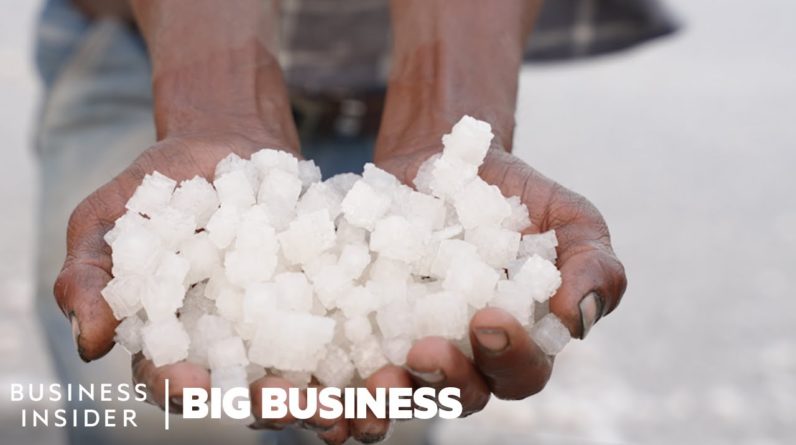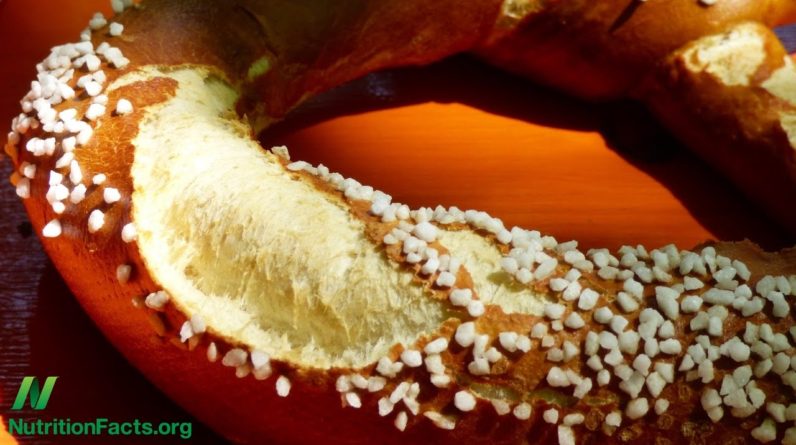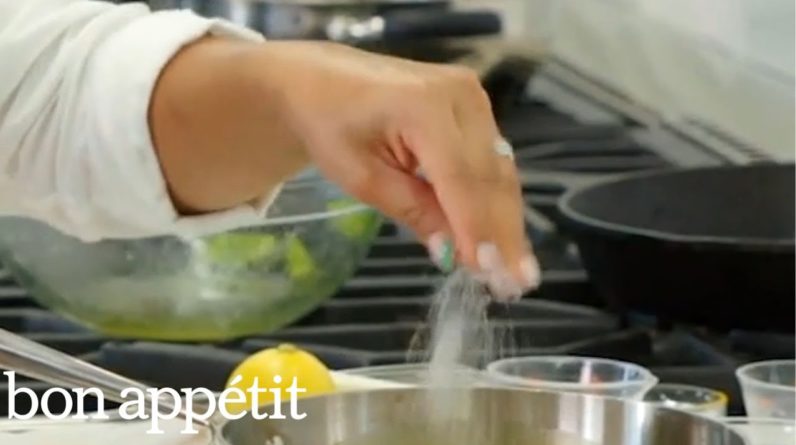
india is one of the world's largest producers of salt and a third of it comes from deep in this desert the dry cracked land of little ron of kutch was once a seabed today over six thousand families live in this desert farming salt by hand they're known as the agarias and they've been salt producers in this harsh environment for generations the air can reach up to 118 degrees fahrenheit and the land they work on is so salty all to earn just four dollars a ton that same salt will sell for 260 dollars a ton is table salt soap or detergent have faced a long history of mistreatment but that stigma continues and this is why you know the salt farmers still continue uh to do this job there have been government efforts to change things in recent years but many still live in poverty we went to india to learn how the agarias became trapped in the big business of salt thousands of years ago this area was part of the arabian sea [Music] or the island it was still waterlogged though as part of the indus river delta but an earthquake in 1819 changed the direction of the river and therefore this entire area got dried up but the water that still sits underneath the mud is 10 times more saline than seawater making it a perfect place to farm salt it was considered as a commodity which is equivalent to gold and the agarias have been working here ever since monsoons fill this area with water starting in june it can take another four months for the waters to recede that is when the salt farmers come into the picture bhavna har chandani is a research scholar who lived with the salt farmers for seven months the agarias arrive every year in october and his wife carry everything they'll need to live in the desert for the next six months including supplies to make their huts clothes farming tools and all their food and water first they have to find the key to this whole operation salty brine water underground they dig 30 feet into the mud to get to it digging wells can take up to a week the families then set up these government subsidized solar panels they'll power the pumps that bring brine water to the surface then the agarias build the salt pans these expansive salt flats they'll make 10 to 20 pans all by hand it's back breaking work now working in the desert is not a joke everyone in the family pitches in to help then the farmers will release the salty brine water from the wells it flows between the pans by the last pan the water reaches the 24 salinity needed to form big salt crystals the farmers are so skilled that they know it's the perfect salinity simply by tasting the water square hair minimum a 300 hundred talk salt nick over the next few months as the water evaporates salt crystals form this rake costs 22 dollars too expensive for many of the farmers they have to rake the salt crystals every day for the first three months to avoid the hottest part of the day but working here can be really dangerous the life expectancy of a farmer is about 60 years because not only do they face extreme temperatures they are dealing with subsoil groin which is highly acidic and you also an exposure to that subsoil brain also comes with a lot of problems in in skin [Music] become blind from years of the bright sun reflecting off the white landscape and because they're so far from the nearest village accessing medical care is often too expensive [Music] [Music] despite these conditions live and work out here until spring when the salt is finally ready they harvest three times the first produces the best quality salt they leave in april usually with over a thousand tons of salt and they'll sell it to a trader like rafiq rahimbai his team picks up the harvest with trucks once it arrives from iran [Music] 200 workers at his factory in tikar processing and packaging salt he says he loses about 20 percent of the salt during the washing and draining process it gets packaged and sold as edible powder salt and as crystal salt to be made into soap detergent and baking soda this whole process refines the salt and makes it more valuable so rafiq can sell his product for upwards of 60 times what the farmers make bhavna says in the time she lived there she saw salt traders working together to pay as little as possible if i'm a farmer if i go and argue that this price is too low i need more he will say okay don't give me your produce go to someone else and then that man the trader will go and tell the other trader if this man comes to you don't take his produce rafiq denied taking part in such practices and says farmers can negotiate their prices says he pays the farmers above average between five and eight dollars a ton but insider could not confirm that and most farmers we spoke to said that this season's market price for salt is between two and four dollars per ton that means in a good year a family will earn just over four thousand dollars for six months of grueling work but this doesn't pay for all the expenses they have as they prepare for the next harvest so at the start of each season many agarias have to come back to traders like rafiq and ask for a loan to help them get through it however that taking advance has now made them fall into the vicious trap of loans and deaths this is the reason why they are unable to come out that means in a good year a family will earn about two thousand dollars for months of grueling work that's well below the poverty line the agarias have never really had control over the salt they farm the british classified the group under the criminal tribes act of 1871 basically branding all members as criminals from birth but many historians say it was really a way to control tribes that were poor low-caste or didn't support colonial rule the law gave police the power to monitor the agaria's movements and arrest them with little cause the british also owned this land so even though the farmers were still allowed to work here the british would take the salt to england process it and sell it back to indians with a heavy tax the salt farmers they were not supposed to take their salt out from the region so what the women used to do they used to hide the salt crystals in their in their petticoat and then they would take it out because salt was expensive many indians couldn't afford the taxed salt even though it was a staple in their diet if you cut off the salt supply it's like you know you are raging a war it got so bad that in 1930 mahatma gandhi organized one of his most successful acts of civil disobedience a 240-mile salt march as he moved from town to town it seemed that all of india was behind sixty thousand protesters were jailed including gandhi himself salt would be contested until india's independence in 1947.

after british rule the agarias were denotified meaning they were no longer classified as a criminal tribe but that stigma continues with few other options they were trapped producing salt this is why you know the salt farmers still continue uh to do this job and they're still working on land they don't own after the british left the little ron of kutch was taken over by the government which leased it to the agarias however the government has stopped renewing their leaves and in 1972 most of the area became a protected wildlife sanctuary therefore they are illegally producing salt they are considered as illegal but the government has an unspoken agreement with the community allowing them to keep farming around the protected areas the government even provides equipment like the subsidized solar panels and boots to help protect against foot infections in the long term the salt farmers and their advocates hope for more government involvement starting with setting a minimum as their own farming depletes the brine the agarias are moving deeper into the desert further away from established towns and villages probably we can at least provide them with minimum water facility so that you know at least they have some amenities but until help arrives these people will be back next season you







